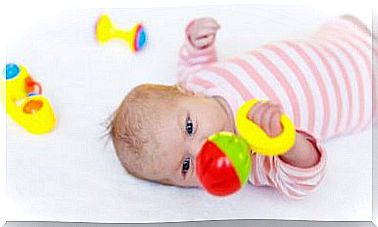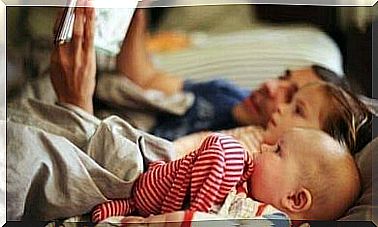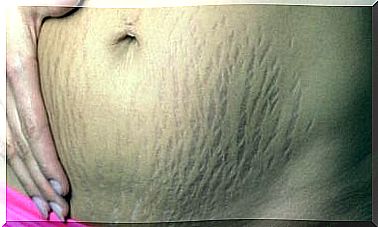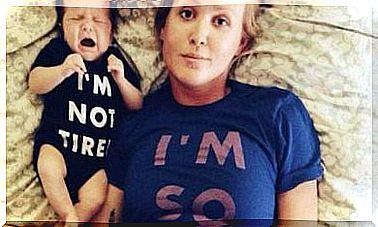Tips To Lower Fever In Children
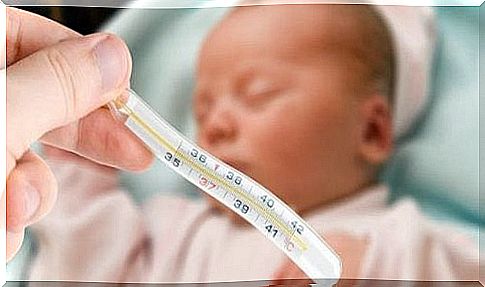
Children often have a fever because the body has to fight against a multitude of pathogens and create the antibodies that adults have long had. In this article, we will talk about how to lower fever in children.
Fever leads to an increase in body temperature. This is the reaction our body has when faced with a disease or infection. If the thermometer registers a temperature of 38 degrees or more, you must act as soon as possible to try to lower it.
Read on to find out how to lower fevers in children.
If your child has some of the following symptoms in addition to the fever, you should see your pediatrician.
1. You have a cough or phlegm.
2. Vomits or has diarrhea. Or, on the contrary, he doesn’t pee or poop.
3. He has very pale skin and is not very active.
4. Has skin rashes.
5. Doesn’t want to eat.
How to lower fever in children
As already mentioned above, in this paragraph we list a series of remedies to lower fever in children.
Take a bath in warm water
To lower the body temperature, you can give the baby a bath. Thus, the body refreshes itself. Be careful not to use cold water, but at about 37 ° C. In this way, the temperature will be slightly lower than that of the baby.

Ideally, keep the baby in the water for a while, so that the water gradually cools down. At the same time, the baby’s temperature will also drop and help him relax.
Refresh the forehead, neck, legs and hands
We recommend using a cloth or gauze moistened with water at room temperature. Place them on the forehead, hands, legs or nape of the neck. This is a way to freshen up your little one without having to give him a bath, in case he is tired or does not want to move. In addition, it is a great alternative even during the winter.
As the gauze warms up, wet it again and reapply. You can repeat the operation until the temperature marked on the thermometer has decreased.
Optimal room temperature
It is important that the temperature of the room where the child is staying is balanced. It must be neither too cold nor too hot. It is also advisable to ventilate it well, so that fresh air can circulate.
When it is summer, if you use a fan or air conditioning, be careful that they are not facing the baby directly. Place them at a distance and make sure that only a light breeze reaches him.
Take off some clothes
To ensure that the fever does not rise, one must try to lower the body temperature. In winter, you can take some clothes off your baby and, in summer, try to keep him as cool as possible.
Another possibility is to take off his shoes and leave his feet out in the open air. If it’s too hot outside, have him keep his feet in contact with a cold surface. This can be the floor, a wet cloth or water directly. The choice depends on the age of the child and how comfortable he feels.
Avoid dehydration
From the moment the fever sets in, the child begins to sweat and lose his appetite. For these reasons you must try to always keep it hydrated. If it is summer and the child is out all day, you need to make sure that he is always in the shade.
To lower the fever in children, we recommend that parents give them oral rehydration solutions. However, we know that the little ones don’t like them very much, so you can replace them with plenty of water, fruit juices, jellies or, in winter, hot soups.
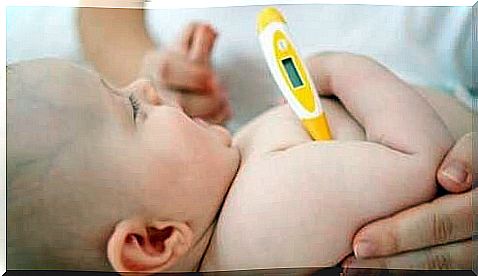
Rest
Finally, the best cure for fever is rest. Many children feel tired and unwilling to play when they have a fever. Others, however, do not realize it and play and run as they usually do.
We always recommend that the little ones remain calm and carry out activities that do not put them under strain. For example, they might see a movie or read a book.
Remember …
Fever is a symptom of illness and for this reason it must be evaluated by a doctor, especially if it is necessary to administer drugs. You should use medicines only on the advice of the pediatrician. Making decisions on your own means putting your child’s health in danger.
Finally, if the fever does not go down, or even goes up, after having put our advice into practice, go to a doctor immediately. He will be able to show you how to act. Also consult it if the fever persists for more than two consecutive days.

